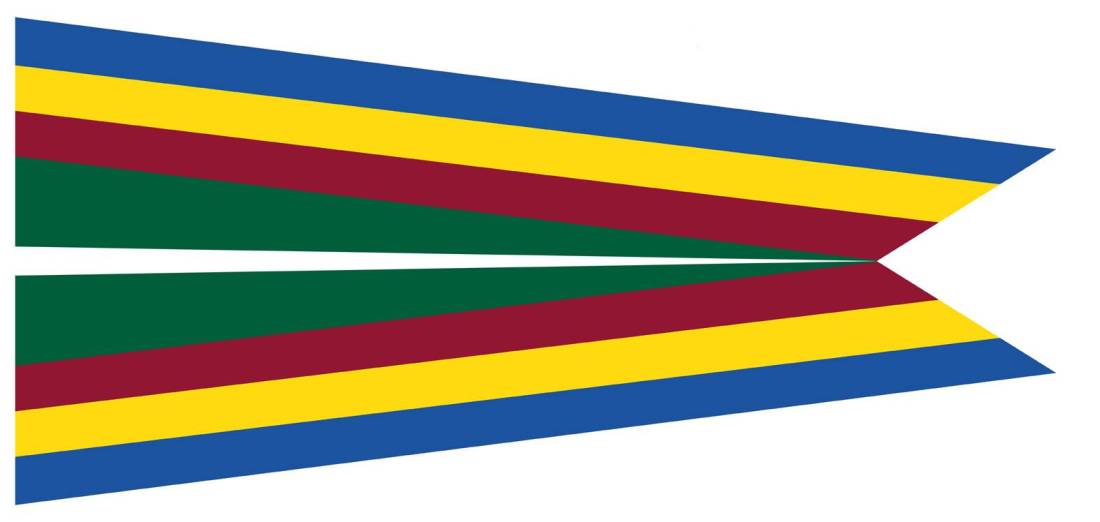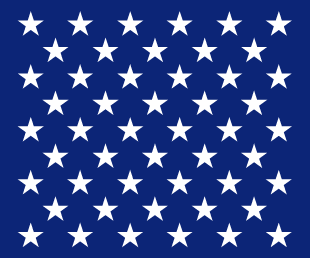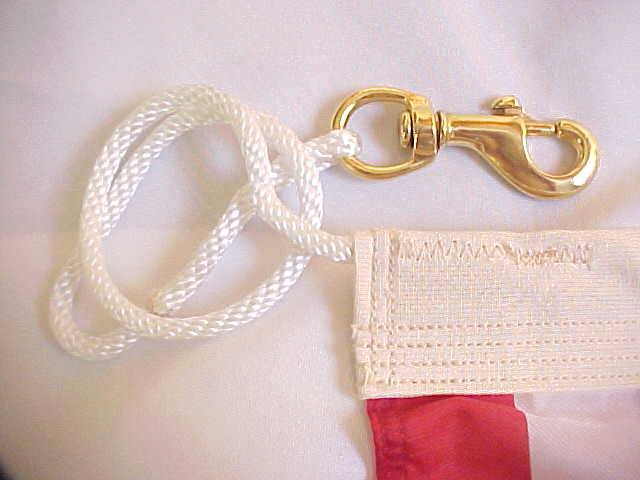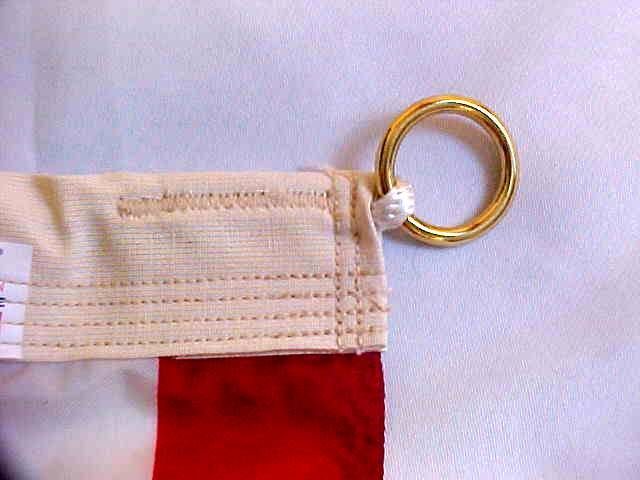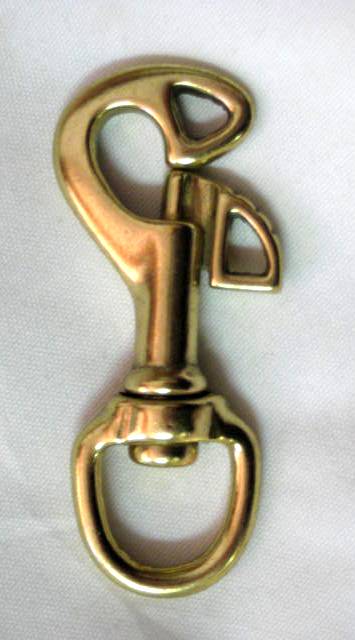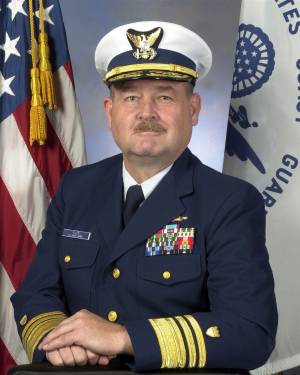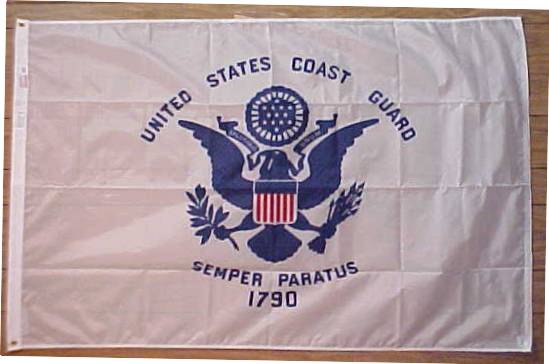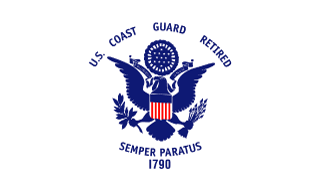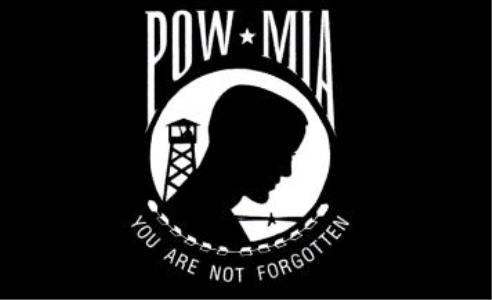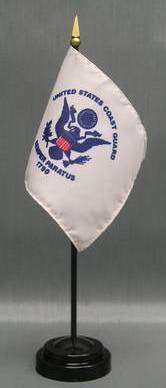Page Title: Coast Guard Flags
Today, the Coast Guard of The United States of America will....Save 14 lives, assist 123 people in distress, and interdict 22 illegal migrants at sea. It will board 202 vessels of "law enforcement interest." Tomorrow it will do it again. It will do it every day. It will do it in 40 foot seas, in tropical heat and in arctic cold.
How do they get all that done? Semper Paratus. Check out the Coast Guard lore and Coast Guard History at the bottom of this page "I just wanted to thank you for such an informative page. I went looking for U.S. Coast Guard flags and was locked in on all the historical information. My son is currently going through boot camp and reading all you had posted, made me feel even more proud of the choice he has made. Thank you!" Victorville, CA
|
United States Coast Guard Ensign, Government Spec Sizes, Nylon RESTRICTED USE #CE5 Coast Guard Size #5 15x24" $39.50; $34.50 each for six or more #CE4 Coast Guard Size #4 30x48" $91.50 (The CE4 is limited to the stock on hand. Please inquire about availability)
|
|
RESTRICTED USE:This from the Coast Guard web site: "As it was intended in 1799, the ensign is displayed as a mark of authority for boardings, examinations and seizures of vessels for the purpose of enforcing the laws of the United States. The ensign is never carried as a parade or ceremony standard." In other words, no ensign, pennant or other identifying insignia prescribed for Coast Guard vessels or aircraft may be used on a vessel or aircraft without authority. These government spec items may not be used on a vessel unless it is by the Coast Guard itself. Do not mark a vessel with these government spec items unless you are doing it in your official capacity for the United States Coast Guard. Non Coast Guard vessels may not display these items.
|
United States Coast Guard Commissioning Pennant
Government Specification, Nylon Dyed Stars and Stripes, Finished with heading and grommet CLOSEOUT ITEM LIMITED TO STOCK ON HAND Item #GSP2605 Size #6 2.5" x 6' $79.95 CLOSEOUT:Limited to stock on hand |
|
|
US Coast Guard Unit Commendation Pennant, Nylon with heading and grommets, Government Spec Size 2 #GSP4995 $41.00 CLOSEOUT ITEM LIMITED TO THE ONE IN STOCK
|
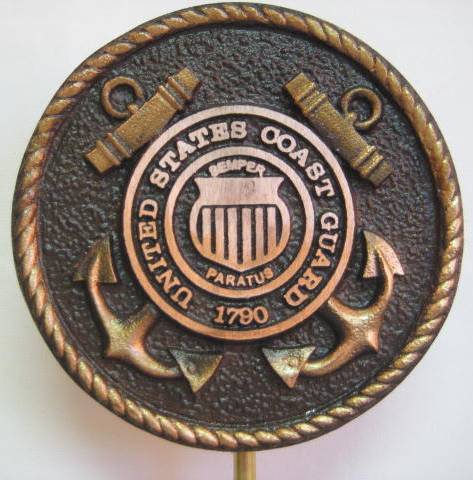
Coast Guard Grave Markers, Coast Guard Flag Holders
|
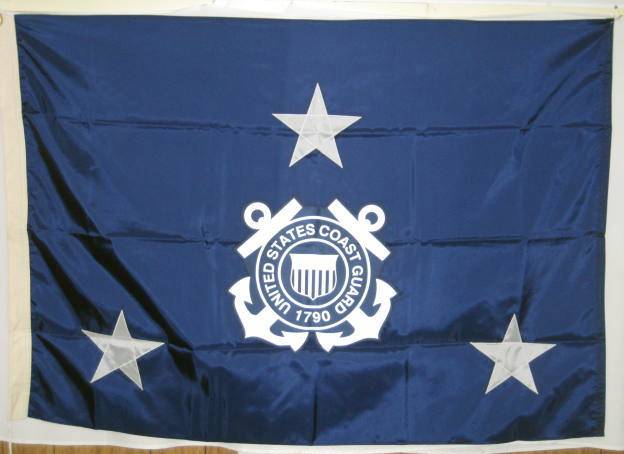 US Coast Guard Vice Admiral flag, Nylon; SEWN STARS, screened printed center design Size #6: 3' 7.5" x 5' 1.5"
$ CLOSEOUT: $86.95 Limited to the one in stock CLOSEOUT ITEMS ARE NOT RETURNABLE; Plus UPS based on your address
"Snap and ring". One corner has a rope with snap, the other corner has the ring.
|
|
|
Armed Forces Stick Flags, Military Hand Held Flags: Military Hand Held Flags |
|
|
Thad W. Allen, USCG, Retired On June 30, 2010, Admiral Thad Allen officially retired from the U.S. Coast Guard. Visitors to this page will know I've been a fan of now citizen Thad Allen. So I've decided to leave his legacy posted even now that he has headed into retirement. Fair winds and following seas, Sir.
|
I just love this guy. Would you say he sort of inspires confidence and has a look that somehow makes you think he's a competent leadership kind of guy? During the Hurricane Katrina disaster the nation looked on in disbelief at the failing rescue efforts. I watched the news conference where they finally introduced him as the new #1 guy down there. It was great. Here is what he said: "When we're through with press availability here, I'm going to hold an all hands meeting with everybody in this building, and we'll have an open and frank conversation about the way forward, and we will move out." I would love to have heard him having that open and frank conversation. I just love this guy. |
|
See the great update I received via e mail on 11/15/06: >>Greetings, It's great to see a place such
as yours where the Coast Guard is held in such high regard. Thank you! You
might be interested to know that Vice Admiral Allen is no longer our Chief
of Staff. He is now Admiral Allen, U.S. Coast Guard Commandant. He has a new
picture on the Commandant Web Site. My response: >>Sir, thank you for visiting our US Coast Guard page but above all for kindly taking the time to inform me how uninformed I am. With your email, I have now updated our page with the great news. I am glad to see that your shipmate is making a career of it! I guess you'd say he has has found a home. <g> Thank you for being our Coast Guard. We think of you often. Al Cavalari, Former Prop.> |
|
|
For parade versions with sleeve and gold fringe add to NYLON FLAGS ONLY: $33.00 to 3x5', $45.00 to 4x6' |
US Coast Guard Standard (Flag) Why does the Coast Guard have two flags? Silk-screened nylon with heading & grommets |
|
|
Size, Material, Item # |
Price |
|
| 12x18" Nylon #MILC12 | $18.95 | |
| 2x3' Nylon #MILC2 | $34.25 | |
| 3x5' Polyester #MILC3P | $24.50 | |
| 3x5' Nylon #MILC3N | $49.95 | |
| 4x6' Nylon #MILC4 | $89.00 | |
| 5x8' Nylon #MILC5 | $122.00 | |
| 6x10' Nylon #MILC6 | $283.00 | |
|
|
United States Coast Guard Retired 3x5' Flag Polyester with Canvas Heading and Brass Grommets3x5' #CORP $29.75
|
|
|
Coast Guard Sticker: Pack of 8 Stickers for $4.95 Approx 2.75" x 12"
|
Coast Guard Desk Flags 4x6" on a 10" staff Great for banquets All armed forces, states, countries and many historical flags available Prices of 4x6" desk flags and bases
|
4x6" Plastic Flags on 10" Spear Tip Staff
United States Coast Guard and other
Armed Forces Stick Flags, Military Hand Held Flags
Click here to see
Military Hand Held Flags
So what is the deal? Why does the Coast Guard
have two flags?
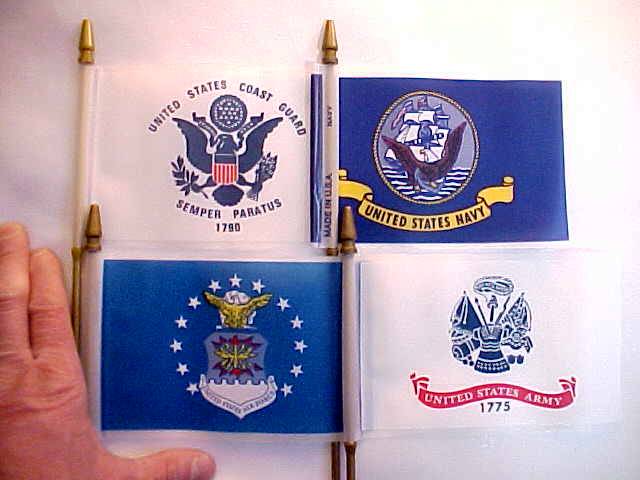
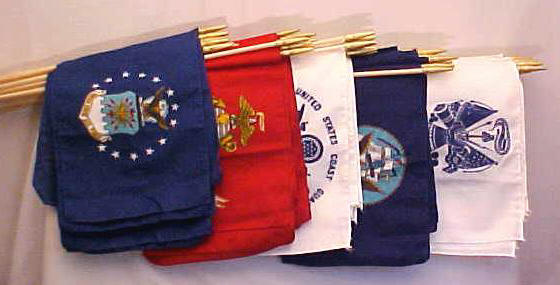
From the US Coasts Guard Historian's Office"
The Coast Guard Standard
The origins of the Coast Guard standard are very obscure. It may have evolved from an early jack. At least one contemporary painting supports this theory. In an 1840 painting, the Revenue cutter Alexander Hamilton flies a flag very similar to today’s Coast Guard standard as a jack. This flag, like the union jack, which is the upper corner of the United States flag, appears to be the canton or upper corner of the Revenue cutter ensign.
An illustration in 1917 shows the Coast Guard standard as a white flag with a blue eagle and 13 stars in a semi-circle surrounding it. At a later date, the words, "United States Coast Guard-- Semper Paratus" were added.
After 1950, the semi-circle of stars was changed to the circle containing 13 stars. The Coast Guard standard is used during parades and ceremonies and is adorned by our 34 battle streamers. We are unique to the other services for we have two official flags, the Coast Guard standard and the Coast Guard ensign.
The Coast Guard Ensign
The initial job of the first revenue cutters was to guarantee that the maritime public was not evading taxes. Import taxes were the lifeblood of the new nation. Smuggling had become a patriotic duty during the revolution. If the new nation under the Constitution were to survive, this activity needed to be stopped.
Working within a limited budget, cutters needed some symbol of authority. Neither officers nor men had uniforms. How could a revenue cutter come alongside a merchant ship during an age of pirates and privateers and order it to heave to?
The solution was to create an ensign unique to the revenue cutter to fly in place of the national flag while in American waters. Nine years after the establishment of the Revenue Cutter Service, Congress, in the Act of March 2, 1799 provided that cutters and boats employed in the service of the revenue should be distinguished from other vessels by a unique ensign and pennant.
On August 1, 1799, Secretary of the Treasury, Oliver Wolcott, issued an order announcing that in pursuance of authority from the President, the distinguishing ensign and pennant would consist of, "16 perpendicular stripes, alternate red and white, the union of the ensign to be the arms of the United States in a dark blue on a white field."
The ensign was poignant with historical detail, inasmuch as in the canton of the flag, there are 13 stars, 13 leaves to the olive branch, 13 arrows and 13 bars to the shield. All corresponded to the number of states constituting the union at the time the nation was established. The 16 vertical stripes in the body are symbolic of the number of States composing the Union when this ensign was officially adopted.
This ensign soon became very familiar in American waters and served as the sign of authority for the Revenue Cutter Service until the early 20th century. The ensign was intended to be flown only on revenue cutters and boats connected with the Customs Service. Over the years it was found flying atop custom houses as well. President William Howard Taft, however, issued an Executive Order June 7, 1910, adding an emblem to the ensign flown by the Revenue cutters to distinguish it from the ensign flown from the custom houses, which read: "By virtue of the authority vested in me under the provisions of Sec. 2764 of the revised Statutes, I hereby prescribe that the distinguishing flag now used by vessels of the Revenue Cutter Service be marked by the distinctive emblem of that service, in blue and white, placed on a line with the lower edge of the union, and over the center of the seventh vertical red stripe from the mast of said flag, the emblem to cover a horizontal space of three stripes. This change to be made as soon as practicable."
At about this time, cutters began flying the U.S. flag as their naval ensign and the revenue ensign became the Service’s distinctive flag.
When the service adopted the name Coast Guard, the Revenue Cutter Service’s ensign became the distinctive flag on all Coast Guard cutters as it had been for the revenue cutters.
The colors used in the Coast Guard ensign today, as in the Revenue Cutter Service, are all symbolic. The color red stands for our youth and sacrifice of blood for liberty’s sake. The color blue not only stands for justice, but also for our covenant against oppression. The white symbolizes our desire for light and purity.
As it was intended in 1799, the ensign is displayed as a mark of authority for boardings, examinations and seizures of vessels for the purpose of enforcing the laws of the United States. The ensign is never carried as a parade or ceremony standard.
Check this out, quoted from the Coast Guard Historian's Office:
Semper Paratus--translation "Always Ready"--is the Coast Guard's motto and the title of its service song. No one seems to know exactly how it was chosen as the Coast Guard's motto. But there is no doubt as to who put the famous motto to words and music.
Captain Francis Saltus Van Boskerck wrote the words in the cabin of the cutter Yamacraw in Savannah, Ga., in 1922. He wrote the music five years later on a beat-up old piano in Unalaska, Alaska.
For probably as long as Captain Van Boskerck could remember, Semper Paratus had been a Revenue Cutter and Coast Guard watchword. The words themselves, always ready or ever ready, date back to ancient times.
No official recognition was given to the Coast Guard motto until it appeared in 1910 on the ensign. Captain Van Boskerck hoped to give it as much recognition as "Semper Fideles" of the Marines and "Anchors Away" of the Navy.
Here's the words to the chorus
"We're always ready for the call,
We place our trust in Thee.
Through howling gale and shot and shell,
To win our victory.
"Semper Paratus" is our guide,
Our pledge, our motto, too.
We're "Always Ready," do or die!
Aye! Coast Guard, we fight for you."
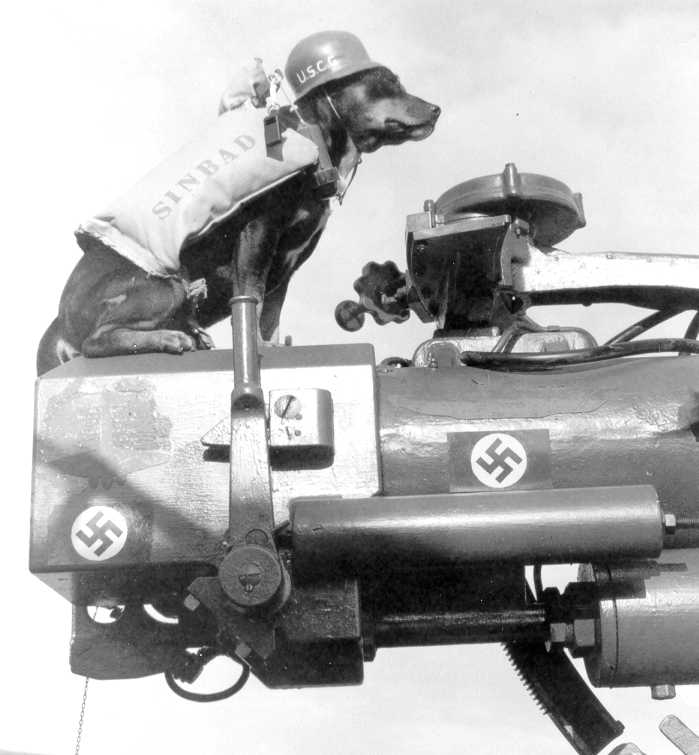 |
Meet Sinbad, USCG (Ret) K9C (Chief Petty Officer, Dog) He was, literally, a member of the crew, complete with all the necessary enlistment forms and other official paperwork, uniforms, and his own bunk. He saw combat in WWII when his cutter Campbell fought it out with a German submarine. He served his shipmates, The Coast Guard and his country from 1938- 1951 |
Some definitions and thoughts on the meaning and importance of the US Coast Guard:
"The Coast Guard occupies a peculiar position among other branches of the Government, and necessarily so from the dual character of its work, which is both civil and military. Its organization, therefore, must be such as will best adapt it to the performance of both classes of duties, and as a civil organization would not suffice for the performance of military functions, the organization of the service must be and is by law military. More than 120 years of practical experience has demonstrated that it is by means of military drills, training, and discipline that the service is enabled to maintain that state of preparedness for the prompt performance of its most important civil duties, which are largely of an emergent nature." Captain Commandant Ellsworth P. Bertholf [as quoted in Robert Johnson, Guardians of the Sea (Annapolis: Naval Institute Press, 1990), p. 33.
Bertholf discussed the inherent differences between the Coast Guard and the Navy as well as indicating why the Coast Guard should still, however, remain a "military service":
". . .the fundamental reasons for the two services are diametrically opposed. The Navy exists for the sole purpose of keeping itself prepared for . . . war. Its usefulness to the Government is therefore to a large degree potential. If it performs in peace time any useful function not ultimately connected with the preparation for war, that is a by-product. On the other hand, the Coast Guard does not exist solely for the purpose of preparing for war. If it did there would be, of course, two navies--a large one and a small one, and that condition, I am sure you will agree, could not long exist. The Coast Guard exists for the particular and main purpose of performing duties which have no connection with a state of war, but which, on the contrary, are constantly necessary as peace functions. It is, of course, essentially an emergency service and it is organized along military lines because that sort of an organization best enables the Coast Guard to keep prepared as an emergency service, and by organization along military lines it is invaluable in time of war as an adjunct and auxiliary to the Navy. . . .while peace time usefulness is a by-product of the Navy, it is the war time usefulness that is a by-product of the Coast Guard."
[As quoted in Robert Johnson, Guardians of the Sea, (Annapolis: Naval Institute Press, 1988), p. 59.]
What is the origin of the saying "You have to go out, but you do not have to come back"?
A: A letter to the editor of the old Coast Guard Magazine written by CBM Clarence P. Brady, USCG (Ret.) which was published in the March 1954 (page 2) issue, states that the first person to make this remark was Patrick Etheridge. Brady knew him when both were stationed at the Cape Hatteras LSS. Brady tells the story as follows:
"A ship was stranded off Cape Hatteras on the Diamond Shoals and one of the life saving crew reported the fact that this ship had run ashore on the dangerous shoals. The old skipper gave the command to man the lifeboat and one of the men shouted out that we might make it out to the wreck but we would never make it back. The old skipper looked around and said, 'The Blue Book says we've got to go out and it doesn't say a damn thing about having to come back.'"
Etheridge was not exaggerating. The Regulations of the Life-Saving Service of 1899, Article VI "Action at Wrecks," section 252, page 58, state that:
"In attempting a rescue the keeper will select either the boat, breeches buoy, or life car, as in his judgment is best suited to effectively cope with the existing conditions. If the device first selected fails after such trial as satisfies him that no further attempt with it is feasible, he will resort to one of the others, and if that fails, then to the remaining one, and he will not desist from his efforts until by actual trial the impossibility of effecting a rescue is demonstrated. The statement of the keeper that he did not try to use the boat because the sea or surf was too heavy will not be accepted unless attempts to launch it were actually made and failed (underlining added), or unless the conformation of the coast--as bluffs, precipitous banks, etc.--is such as to unquestionable preclude the use of a boat."
This section of the Regulations remained in force after the creation of the Coast Guard in 1915. The new Instructions for United States Coast Guard Stations, 1934 edition, copied Section 252 word for word as it appeared in 1899. [1934 Instructions for United States Coast Guard Stations, Paragraph 28, page 4].
The url for this page is http://flagguys.com/coastguard.html 1 15 23
